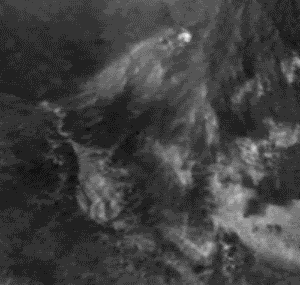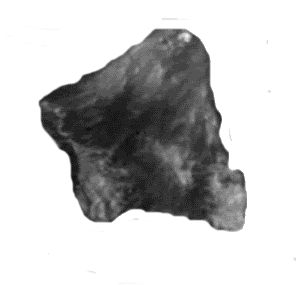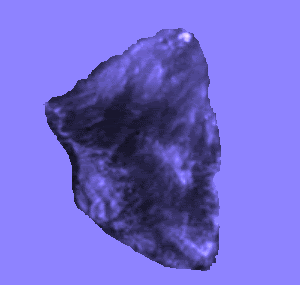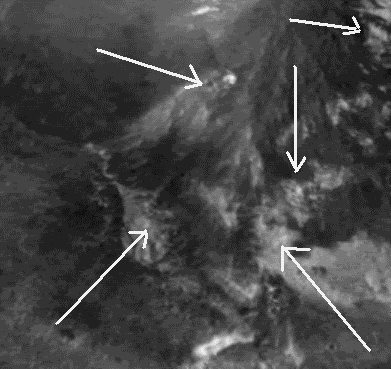- Thank you received: 0
My pareidolia knows no bounds.
18 years 8 months ago #9007
by rderosa
Replied by rderosa on topic Reply from Richard DeRosa
A recent post of Neil's on "Aladdin" in the Faces topic offer's a great example of one of my sub topics.
Before I present my point, though, I would like to clarify something. As I've stated before, I think a number of the images Neil has been posting are quite compelling. I have no trouble believing they are actual artworks. "Clown" is a good example, and there are others. On the other hand, I have little doubt that quite a number of them aren't. That's what this topic is about. Not necessarily just Neil's images, but any images. That's why I started with the Skullface Mosaic.
"The majority ultimately accept the beliefs of the innovators—provided they prove to be right when history makes its judgment."[Neil]
Yes, that's absolutely true. But meanwhile, we are tasked with answering the question "can pareidolia really be that elaborate?". Emanuel reminded me that I asked that question back at the beginning of the Family topic. I don't think it's a question that can be answered definitively without actual proof. It will clearly be answered with higher resolution color images of many of these scenes.
Now to my point. Here's the description of "Aladdin":
"Aladdin’s features are decidedly humanoid. The image depicts a young male, <i><b>apparently clean shaven </b></i>or with a small goatee. Both eyes are visible in this semi-profile facing to our right. Aladdin seems to be looking up; his eyebrows are furrowed which looks (to me) like a look of confidence, though admittedly that's interpretive. He is wearing a turban, (hence his name), with, as I said, a small face and perhaps a jewel at the apex. I already mentioned the ear trinket. " [Neil]
When I looked down at the black and white image, I thought, wow, this is a really good one. I could clearly see "Aladdin" with a round gotee, and head slightly back, with turban, looking up at the sky. Not just his eyes, but his head has a slight tilt backwards. He has sort of a pug nose, and if you follow the line around the gotee (which is highlighted by the sun in the front) and back towards the base of the turban, you can see that <i><b>he has a full beard</b></i>, and his neck is showing, as if it was a bust. Very convincing.
There's just one problem, though. When I looked further down in the post, and saw the matte key, I realized that Neil was describing something totally different. What I thought was his neck, Neil had as the chin and gotee of his elongish face. Totally different than my interpretation. I can see what he's saying, but it's not what jumped out at me. Who's right? Does it matter?
Aladdin:

My interpretation:
[Note: I cut off the neck, to make the chin and beard line clearer to the viewer]

Neil's interpretation:
[Note: You can see how he cut right through what I thought is the roundish gotee.]

rd
Before I present my point, though, I would like to clarify something. As I've stated before, I think a number of the images Neil has been posting are quite compelling. I have no trouble believing they are actual artworks. "Clown" is a good example, and there are others. On the other hand, I have little doubt that quite a number of them aren't. That's what this topic is about. Not necessarily just Neil's images, but any images. That's why I started with the Skullface Mosaic.
"The majority ultimately accept the beliefs of the innovators—provided they prove to be right when history makes its judgment."[Neil]
Yes, that's absolutely true. But meanwhile, we are tasked with answering the question "can pareidolia really be that elaborate?". Emanuel reminded me that I asked that question back at the beginning of the Family topic. I don't think it's a question that can be answered definitively without actual proof. It will clearly be answered with higher resolution color images of many of these scenes.
Now to my point. Here's the description of "Aladdin":
"Aladdin’s features are decidedly humanoid. The image depicts a young male, <i><b>apparently clean shaven </b></i>or with a small goatee. Both eyes are visible in this semi-profile facing to our right. Aladdin seems to be looking up; his eyebrows are furrowed which looks (to me) like a look of confidence, though admittedly that's interpretive. He is wearing a turban, (hence his name), with, as I said, a small face and perhaps a jewel at the apex. I already mentioned the ear trinket. " [Neil]
When I looked down at the black and white image, I thought, wow, this is a really good one. I could clearly see "Aladdin" with a round gotee, and head slightly back, with turban, looking up at the sky. Not just his eyes, but his head has a slight tilt backwards. He has sort of a pug nose, and if you follow the line around the gotee (which is highlighted by the sun in the front) and back towards the base of the turban, you can see that <i><b>he has a full beard</b></i>, and his neck is showing, as if it was a bust. Very convincing.
There's just one problem, though. When I looked further down in the post, and saw the matte key, I realized that Neil was describing something totally different. What I thought was his neck, Neil had as the chin and gotee of his elongish face. Totally different than my interpretation. I can see what he's saying, but it's not what jumped out at me. Who's right? Does it matter?
Aladdin:

My interpretation:
[Note: I cut off the neck, to make the chin and beard line clearer to the viewer]

Neil's interpretation:
[Note: You can see how he cut right through what I thought is the roundish gotee.]

rd
Please Log in or Create an account to join the conversation.
- tvanflandern
-
- Offline
- Platinum Member
-

Less
More
- Thank you received: 0
18 years 8 months ago #16046
by tvanflandern
Replied by tvanflandern on topic Reply from Tom Van Flandern
<blockquote id="quote"><font size="2" face="Verdana, Arial, Helvetica" id="quote">quote:<hr height="1" noshade id="quote"><i>Originally posted by jrich</i>
<br />Tom, the problem is that myself and others do not agree that the *features* exist. We honestly don't see the features with the carefully predicted properties. If they are so obvious as to be reasonably considered objectively present, why doesn't everyone see them after careful examination? And, yes, I have a very good LCD monitor and my eyesight is quite good.<hr height="1" noshade id="quote"></blockquote id="quote"></font id="quote">When I began studying spacecraft imagery, I thought I had a good monitor and good eyesight too. But I learned early on that one must still optimize brightness and contrast for the monitor in use to be able to see many features in an image.
Then one day, I visited Mark Kelly's image processing laboratory in Baltimore. He and his associate had large, high-resolution, high-contrast, small dot-pitch monitors. He loaded up a CD I brought with some Mars images on it, and adjusted them for his monitor. I couldn't believe the difference! His monitors showed details I had never seen before and had no idea existed.
After that, I invested in a 20-inch high-res, hi-contrast LCD monitor -- the best my budget could afford. It wasn't as good as Kelly's, but has still served me well. I now rarely have trouble seeing what others see in images if I take the time to optimize them for my monitor.
Kelly was one of the major contributors to the animation on our web site, #1 at metaresearch.org/media%20and%20links/animations/animations.asp The short animation starts with a negative of the 1998 image we were discussing, otherwise unmodified. It then uses Photoshop (not human artistry) with triangulated heights of control points on the mesa to accurately change the lighting from low SE to high NW, similar to the Viking imagery. Finally, it changes the viewing perspective from far to the west to overhead. Although some details east of the nose feature were hidden in the original and could therefore not be accurately reconstructed, most of the rest was confirmed by later imagery.
If you can view this animation, you should have no difficulty seeing a triangular shape over each eye socket, and two small round features side-by-side at the bottom end of the nose feature. Those are two of the four features we were discussing. Once you see them this way, you should have little difficulty seeing the same features in your own rendition of the 1998 image, once it is optimized for brightness and contrast on your monitor.
To complete the process, go to spsr.utsi.edu and click on the "Peer-reviewed journal publications" link. Then scan down and click on the paper "Evidence of Planetary Artifacts". Figure 6 in that paper shows the final frame from the animation, in case you have trouble getting the original working. Figures 8 and 10 show unmodified original close-ups of the feature over the west eye-socket and the feature at the bottom end of the nose, respectively. Adjust these for brightness and contrast if needed, so that the view on your monitor is optimized. (This is akin to focusing an image, and can be very important for some monitor types.)
On the completion of these steps, you should no longer have difficulty seeing that the features in question (at least these two) do have objective existence that in no way depends on a human mind to imagine or project anything.
Please report back your successes and failures in attempting to follow this recipe. It should be an easy matter to determine whether the existence of these feature is objective or subjective. -|Tom|-
<br />Tom, the problem is that myself and others do not agree that the *features* exist. We honestly don't see the features with the carefully predicted properties. If they are so obvious as to be reasonably considered objectively present, why doesn't everyone see them after careful examination? And, yes, I have a very good LCD monitor and my eyesight is quite good.<hr height="1" noshade id="quote"></blockquote id="quote"></font id="quote">When I began studying spacecraft imagery, I thought I had a good monitor and good eyesight too. But I learned early on that one must still optimize brightness and contrast for the monitor in use to be able to see many features in an image.
Then one day, I visited Mark Kelly's image processing laboratory in Baltimore. He and his associate had large, high-resolution, high-contrast, small dot-pitch monitors. He loaded up a CD I brought with some Mars images on it, and adjusted them for his monitor. I couldn't believe the difference! His monitors showed details I had never seen before and had no idea existed.
After that, I invested in a 20-inch high-res, hi-contrast LCD monitor -- the best my budget could afford. It wasn't as good as Kelly's, but has still served me well. I now rarely have trouble seeing what others see in images if I take the time to optimize them for my monitor.
Kelly was one of the major contributors to the animation on our web site, #1 at metaresearch.org/media%20and%20links/animations/animations.asp The short animation starts with a negative of the 1998 image we were discussing, otherwise unmodified. It then uses Photoshop (not human artistry) with triangulated heights of control points on the mesa to accurately change the lighting from low SE to high NW, similar to the Viking imagery. Finally, it changes the viewing perspective from far to the west to overhead. Although some details east of the nose feature were hidden in the original and could therefore not be accurately reconstructed, most of the rest was confirmed by later imagery.
If you can view this animation, you should have no difficulty seeing a triangular shape over each eye socket, and two small round features side-by-side at the bottom end of the nose feature. Those are two of the four features we were discussing. Once you see them this way, you should have little difficulty seeing the same features in your own rendition of the 1998 image, once it is optimized for brightness and contrast on your monitor.
To complete the process, go to spsr.utsi.edu and click on the "Peer-reviewed journal publications" link. Then scan down and click on the paper "Evidence of Planetary Artifacts". Figure 6 in that paper shows the final frame from the animation, in case you have trouble getting the original working. Figures 8 and 10 show unmodified original close-ups of the feature over the west eye-socket and the feature at the bottom end of the nose, respectively. Adjust these for brightness and contrast if needed, so that the view on your monitor is optimized. (This is akin to focusing an image, and can be very important for some monitor types.)
On the completion of these steps, you should no longer have difficulty seeing that the features in question (at least these two) do have objective existence that in no way depends on a human mind to imagine or project anything.
Please report back your successes and failures in attempting to follow this recipe. It should be an easy matter to determine whether the existence of these feature is objective or subjective. -|Tom|-
Please Log in or Create an account to join the conversation.
- neilderosa
-
- Offline
- Platinum Member
-

Less
More
- Thank you received: 0
18 years 8 months ago #9008
by neilderosa
Replied by neilderosa on topic Reply from Neil DeRosa
Please Log in or Create an account to join the conversation.
18 years 8 months ago #16047
by rderosa
Replied by rderosa on topic Reply from Richard DeRosa
<blockquote id="quote"><font size="2" face="Verdana, Arial, Helvetica" id="quote">quote:<hr height="1" noshade id="quote"><i>Originally posted by neilderosa</i>
<br />Here is Aladdin with the "Jinn" indicated. (I think the moderators frown on duplicate posts, so the reader can go to last post in the "Faces from the Chasmas" topic for a full explanation.)
<hr height="1" noshade id="quote"></blockquote id="quote"></font id="quote">
Your bottom right "Jinn" is pointing directly to my "chin".
rd
<br />Here is Aladdin with the "Jinn" indicated. (I think the moderators frown on duplicate posts, so the reader can go to last post in the "Faces from the Chasmas" topic for a full explanation.)
<hr height="1" noshade id="quote"></blockquote id="quote"></font id="quote">
Your bottom right "Jinn" is pointing directly to my "chin".
rd
Please Log in or Create an account to join the conversation.
- neilderosa
-
- Offline
- Platinum Member
-

Less
More
- Thank you received: 0
18 years 8 months ago #9009
by neilderosa
Replied by neilderosa on topic Reply from Neil DeRosa
<blockquote id="quote"><font size="2" face="Verdana, Arial, Helvetica" id="quote">quote:<hr height="1" noshade id="quote">Your bottom right "Jinn" is pointing directly to my "chin".<hr height="1" noshade id="quote"></blockquote id="quote"></font id="quote">
Remember that guy on Ed Sulivan who used to paint a face on his chin then lean over a table backwards and move his chin so that when he talked his chin looked like a bald head? He used to and say "Tso right--tso right."
Remember that guy on Ed Sulivan who used to paint a face on his chin then lean over a table backwards and move his chin so that when he talked his chin looked like a bald head? He used to and say "Tso right--tso right."
Please Log in or Create an account to join the conversation.
- neilderosa
-
- Offline
- Platinum Member
-

Less
More
- Thank you received: 0
18 years 8 months ago #9012
by neilderosa
Replied by neilderosa on topic Reply from Neil DeRosa
Trinket may be right on some of this, but it all gets "crazy" very quickly. Remember, we have to learn to walk before we can fly. I would have perferred to leave the little (and immense) faces out of consideration for now, especially when they are intermingled. But my brother insisted on putting a "chin" in the middle of Aladdin's face; so I had to respond. A word of caution, a winning policy when dealing with a world of sceptics is "KISS," (keep it simple stupid.)
It's a slippery slope to Lalla Land and pareidolia. Best to follow JP Levasseur's advice and stick to the most defensible faces. I count around 15-20 so far.
Neil
It's a slippery slope to Lalla Land and pareidolia. Best to follow JP Levasseur's advice and stick to the most defensible faces. I count around 15-20 so far.
Neil
Please Log in or Create an account to join the conversation.
Time to create page: 0.648 seconds

